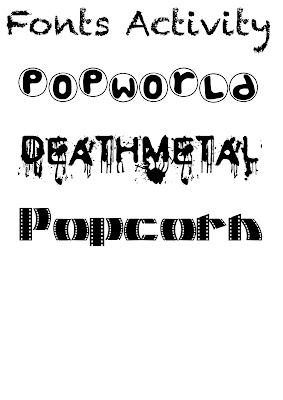For this task, we were asked to look at the different shot types that are in the Media and then re-create them
in a small rectangle box at the side of the sheet. The first shot that we were asked to re-create was the Establishing shot, which is a shot which sets the scene of the programme/film/documentary or any type of Media. The shot is mostly just of the Village where a programme is set etc. For example, the Establishing shot of the Soap Opera Coronation Street is the shots of the Town and streets. The next shot was a Close-Up which is a shot of the character or person's face and nothing else. The next was a Mid Shot, which is a shot of the person's hips and up, and nothing else, which includes not showing any legs or other part of the body. The next was a Long Shot, which is a shot of the person's whole body. A Two-Shot is a shot of two characters in the same scene. The POV shot was a difficult shot to portray in a diagram, however in the end I drew two eyes with the scene in the middle of the iris'. The POV Shot is when the camera seems like it is inside the Character's eyes and it is from their view, as if you are that Character looking at someone. The Aerial Shot is when a scene is shot from above, like it is obviously shot from a Helicopter or Plane, simply just a shot from above. An Over the Shoulder Shot is a shot from behind a Character's shoulder, looking over at the scene that they are looking at. The last two shots were a Master Shot and a Wide Shot. The Master Shot is the classic shot that nearly ever scene comes back to in a programme, as it shows the whole scene in one. The Wide Shot is simply a Landscape shot of a scene.
















